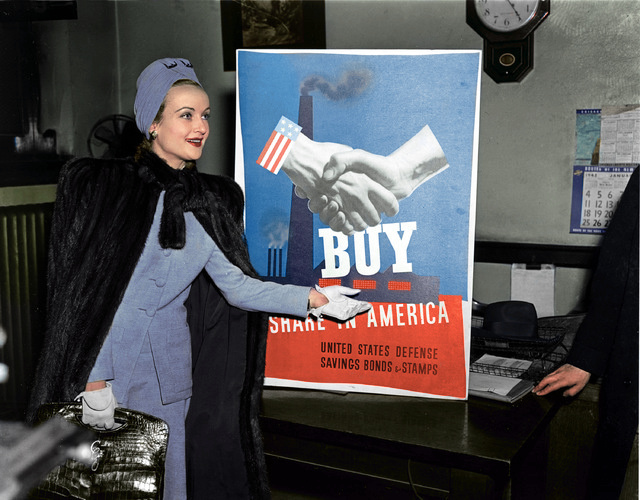Sales record won by Miss Lombard

Washington (UP) –
A Treasury spokesman today credited Carole Lombard with being instrumental in bringing about the largest recorded sales of defense savings bonds.
He said Miss Lombard journeyed from Hollywood to Indianapolis early this week to star in the first of a series of rallies to promote sales of defense stamps and bonds, and that $2 million worth of bonds were sold as a result.